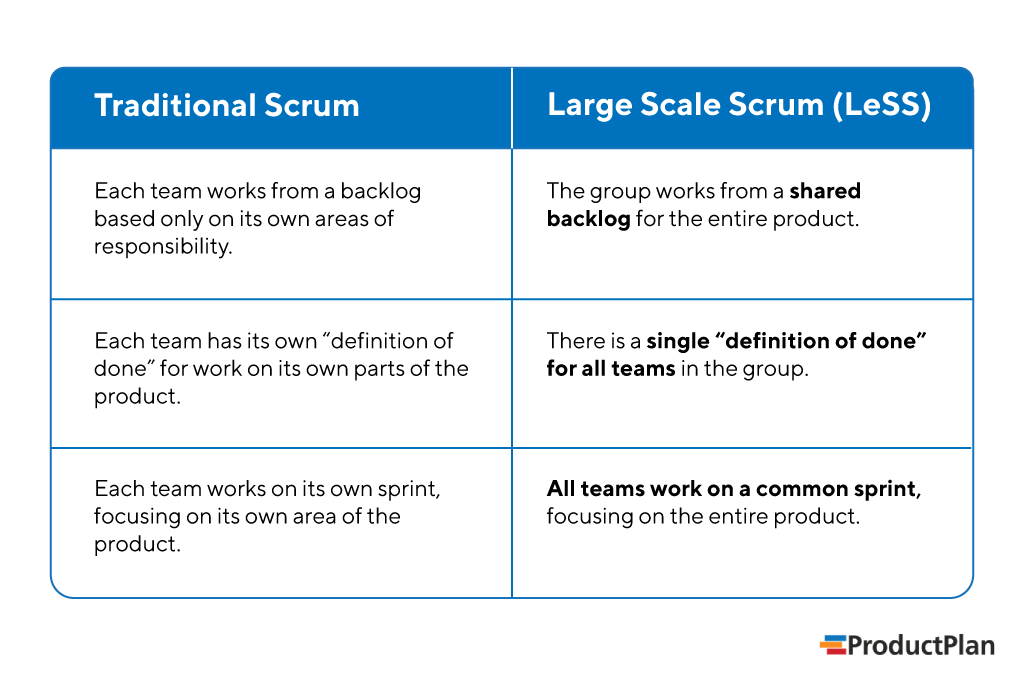What is LeSS (Large Scale Scrum)?
The traditional Scrum agile framework is a method of software development that divides work into teams. Each team works on a few projects at a time, in short-term increments called sprints. The Scrum approach was designed for small individual teams. But a company can apply this prioritization framework to a larger group of product teams working together. One way to do this is to use an approach called large scale Scrum (LeSS).
The LeSS approach can work for companies with cross-functional teams ranging in size from a few dozen people to thousands. The two LeSS prioritization frameworks are:
- LeSS: from two eight teams working on the same product.
- LeSS Huge: as many as a few thousand people working on the same product.
How is LeSS Different from Traditional Scrum?
Large scale Scrum (LeSS) is a scaled-up version of the traditional, one-team Scrum. LeSS uses many principles of the Scrum agile framework but with differences including:
How Does LeSS Work in Practice?
Businesses can apply LeSS differently, according to their size and needs. But according to the training and consulting firm The LeSS Company, an effective LeSS framework will follow these guidelines:
- There should be one product owner for the entire LeSS group.
- The group should be broken into complete, cross-functional teams, and not into specialist teams.
- Sprint planning should consist of two parts. First, a group-wide planning meeting that includes members from all teams. Then, individual spring planning meetings for each team to plan its own work.
- Daily scrum meetings (standups) should be held independently by each team to make sure its members are on track. But to increase information sharing across teams, they recommend that team members observe each other’s daily meetings.
- The sprint review at the end of each sprint should include members of all teams and all relevant stakeholders going over the latest product increment. The LeSS Company suggests treating this sprint review as a science fair—a large room with multiple areas showing the completed work, each area staffed by the relevant team members to discuss the items built and answer questions.
- The process should include an overall retrospective. Unlike the agile retrospective in the one-team Scrum framework, this meeting will focus on what worked and what didn’t overall in the previous sprint, and how the group can improve the process in general.
Are There Agile Frameworks for Large Scale Organizations?
LeSS is only one method for scaling up an organization’s agile development. Another scaling framework is the Scaled Agile Framework (SAFe), formerly called the “Agile Enterprise Big Picture,” which helps larger companies apply existing agile frameworks including Scrum to an entire product or even to managing a whole portfolio of products.
Yet another approach for scaling agile development at a larger company is Disciplined Agile (DA), also called Disciplined Agile Delivery (DaD). Whereas LeSS is a process-driven approach, DA focuses on broad goals and outcomes, and it is designed to simplify decision-making for larger teams. Experts describe DA as a hybrid agile framework that can help an enterprise-scale its agile approach.
Related Terms: Agile / Scrum Master / Scaled Agile Framework (SAFe) / Scrum Agile Framework / Disciplined Agile (DA)


